
Question Number 89361 by 675480065 last updated on 17/Apr/20
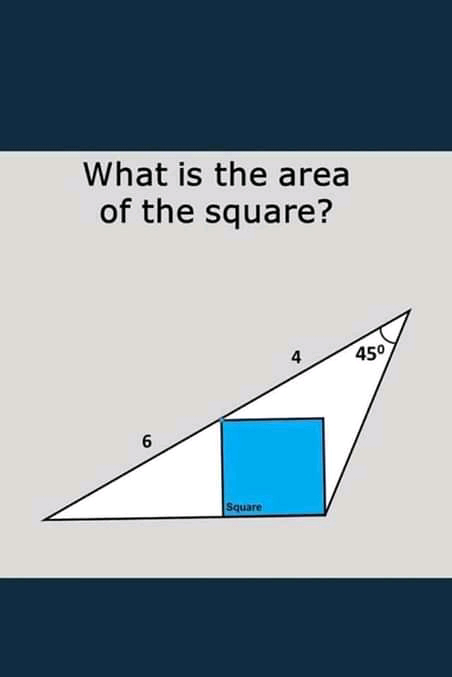
Answered by mr W last updated on 17/Apr/20
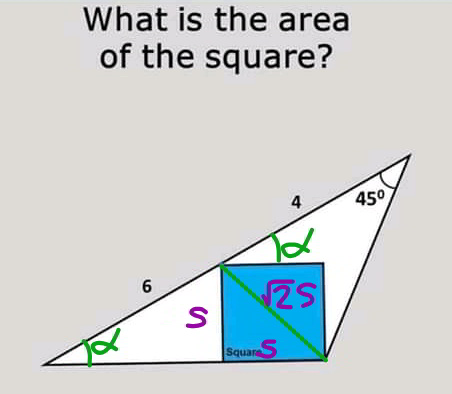
Commented by mr W last updated on 17/Apr/20
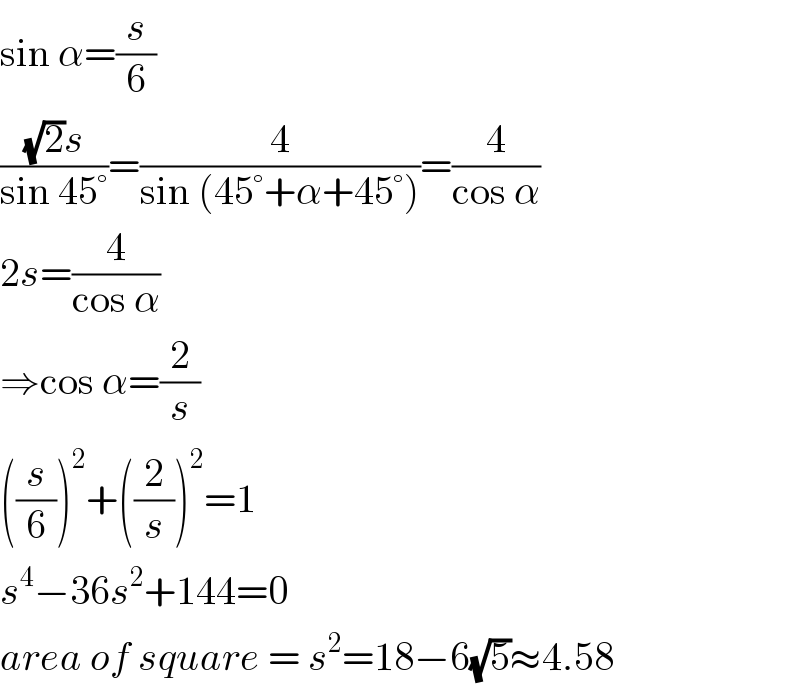
$$\mathrm{sin}\:\alpha=\frac{{s}}{\mathrm{6}} \\ $$$$\frac{\sqrt{\mathrm{2}}{s}}{\mathrm{sin}\:\mathrm{45}°}=\frac{\mathrm{4}}{\mathrm{sin}\:\left(\mathrm{45}°+\alpha+\mathrm{45}°\right)}=\frac{\mathrm{4}}{\mathrm{cos}\:\alpha} \\ $$$$\mathrm{2}{s}=\frac{\mathrm{4}}{\mathrm{cos}\:\alpha} \\ $$$$\Rightarrow\mathrm{cos}\:\alpha=\frac{\mathrm{2}}{{s}} \\ $$$$\left(\frac{{s}}{\mathrm{6}}\right)^{\mathrm{2}} +\left(\frac{\mathrm{2}}{{s}}\right)^{\mathrm{2}} =\mathrm{1} \\ $$$${s}^{\mathrm{4}} −\mathrm{36}{s}^{\mathrm{2}} +\mathrm{144}=\mathrm{0} \\ $$$${area}\:{of}\:{square}\:=\:{s}^{\mathrm{2}} =\mathrm{18}−\mathrm{6}\sqrt{\mathrm{5}}\approx\mathrm{4}.\mathrm{58} \\ $$
Commented by 675480065 last updated on 17/Apr/20

$$\mathrm{thnks}\:\mathrm{but}\:\mathrm{i}\:\mathrm{cant}\:\mathrm{go}\:\mathrm{further} \\ $$
Commented by mr W last updated on 17/Apr/20

$${then}\:{you}\:{have}\:{selected}\:{a}\:{question}\: \\ $$$${which}\:{is}\:{not}\:{suitable}\:{for}\:{your}\:{level} \\ $$$${yet}.\:{we}\:{need}\:{here}\:{to}\:{apply}\:{sines}\:{law}, \\ $$$${trigonometry},\:{quadratic}\:{equation}\:{etc}. \\ $$
Commented by Tony Lin last updated on 17/Apr/20

$${this}\:{can}\:{be}\:{evaluated}\:{without}\:{trigometry} \\ $$
Commented by Tony Lin last updated on 17/Apr/20
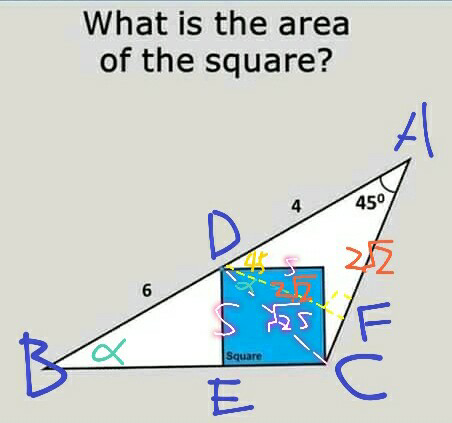
Commented by Tony Lin last updated on 17/Apr/20
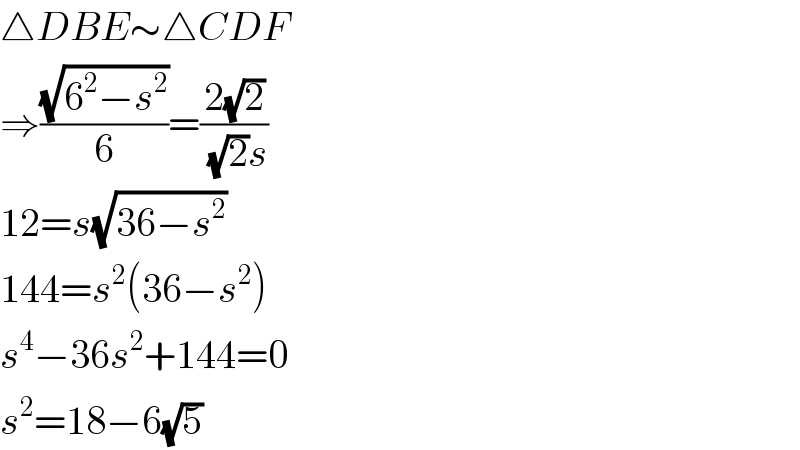
$$\bigtriangleup{DBE}\sim\bigtriangleup{CDF} \\ $$$$\Rightarrow\frac{\sqrt{\mathrm{6}^{\mathrm{2}} −{s}^{\mathrm{2}} }}{\mathrm{6}}=\frac{\mathrm{2}\sqrt{\mathrm{2}}}{\sqrt{\mathrm{2}}{s}} \\ $$$$\mathrm{12}={s}\sqrt{\mathrm{36}−{s}^{\mathrm{2}} } \\ $$$$\mathrm{144}={s}^{\mathrm{2}} \left(\mathrm{36}−{s}^{\mathrm{2}} \right) \\ $$$${s}^{\mathrm{4}} −\mathrm{36}{s}^{\mathrm{2}} +\mathrm{144}=\mathrm{0} \\ $$$${s}^{\mathrm{2}} =\mathrm{18}−\mathrm{6}\sqrt{\mathrm{5}} \\ $$
Commented by mr W last updated on 18/Apr/20

$${nice}\:{solution}\:{sir}! \\ $$
